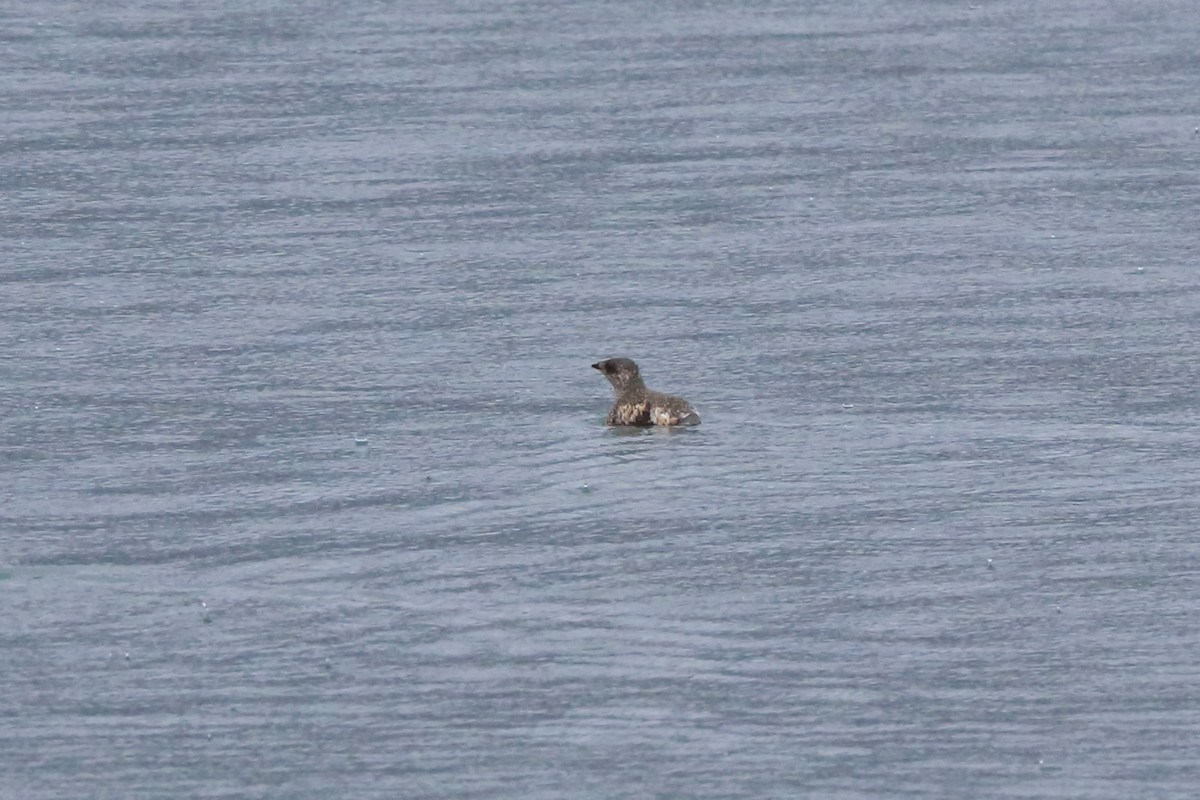Kittlitz's Murrelet
A species of Forest and Glacier Murrelets Scientific name : Brachyramphus brevirostris Genus : Forest and Glacier Murrelets
Kittlitz's Murrelet, A species of Forest and Glacier Murrelets
Botanical name: Brachyramphus brevirostris
Genus: Forest and Glacier Murrelets
Content
Description General Info
 Photo By Nigel Voaden
Photo By Nigel Voaden Description
The Kittlitz's murrelet is, like the marbled murrelet, a small compact auk, 25 cm long with tiny legs and cryptic plumage during the breeding season. The colour of the breeding plumage, greyish-brown, reflects its habit of breeding on bare ground near snowfields. In the winter it adopts the black and white plumage typical of many seabirds. Its bill is smaller than that of the marbled murrelet. The Kittlitz's murrelet mostly breeds and lives in the coastal areas of Alaska, both on the mainland around Prince William Sound, the Kenai Peninsula, sparsely up the west coast and along the Aleutian Islands. It also nests in Siberia and possibly Wrangel Island. 
Size
23 - 41 cm
Life Expectancy
8-25 years
Nest Placement
Cavity
Feeding Habits
Kittlitz's Murrelet primarily feeds on fishes, macrozooplankton, and various invertebrates. It employs diving techniques to capture prey, showcasing remarkable adaptations for underwater foraging. This species exhibits a preference for specific aquatic environments that support its diverse diet.
Habitat
Kittlitz's Murrelet favors rocky sea coasts and adjacent neritic zones, primarily nesting in coastal or inland alpine tundra with scree slopes. They thrive in cold, turbid shallow waters near glaciers, unlike their relatives who prefer deeper oceans. In winter, kittlitz's Murrelet migrates to offshore southern breeding ranges, inhabiting submarine banks and coastal regions in Northeast Asia and southeastern Alaska.
Nest Behavior
During breeding, kittlitz's Murrelet exhibits solitary nesting habits. The egg-laying period and specifics of parental care are not well-documented, but like other murrelets, it's likely that both parents share incubation duties and caring for the chick until fledging.
Nest Characteristics
Kittlitz's Murrelet's nest is typically located on the ground on steep, rocky slopes with sparse vegetation, often at high elevations between 1000-3000 feet and multiple miles inland. The nest site may be at the base of a large rock, close to a stream, and consists of a simple depression with no nesting material, where the egg is laid on bare rock or ground.
Dite type
Piscivorous
General Info
Feeding Habits
Bird food type
Behavior
The Kittlitz's murrelet feeds close to the shore, in particular in the waters around tidewater glaciers. It feeds on larval fish, krill and other small zooplankton. Chicks are fed with slightly larger fish carried in the bill. The Kittlitz's murrelet is one of the least known auks, although it is known not to be colonial, nesting instead above the tree line on mountains inland from the sea. The nests are situated on south facing slopes on bare ground, often close to snow. A single egg is laid (and incubated for an unknown amount of time). Chicks are fed throughout the day, and reach fledging weight in around 25 days. The exposed nature of the nesting grounds mean that chicks keep their downy feathers later than most other birds, losing the down 12 hours before they fledge. It is assumed that they fly to sea on fledging, but it has also been suggested that they reach the seas through rivers. After the chick fledges it is thought to receive no further parental care, no chick has ever been seen with an adult at sea. 
Species Status
Until 2014, the Kittlitz's murrelet was considered to be critically endangered by the International Union for the Conservation of Nature (IUCN), based on dramatic declines at every site studies. However, in 2014, the IUCN downlisted the murrelet's status from critically endangered to near threatened, as more recent studies indicate that declines appear to be happening at a less rapid rate than was previously thought; some populations appear to be stabilizing or recovering slightly. The species is not listed under the Endangered Species Act, though it was a Species of Conservation Concern until that category was abolished. It is threatened by habitat loss from global warming (as it is seemingly dependent on retreating glaciers), disturbance by boats and oil spills. An estimated 5-10% of the world population was killed during the Exxon Valdez oil spill. 

 Photo By Nigel Voaden
Photo By Nigel Voaden